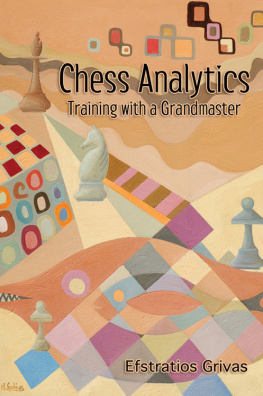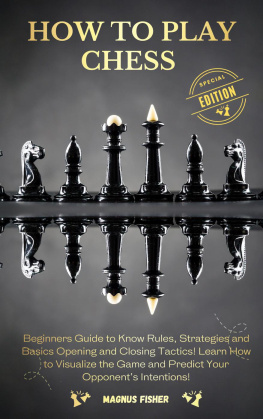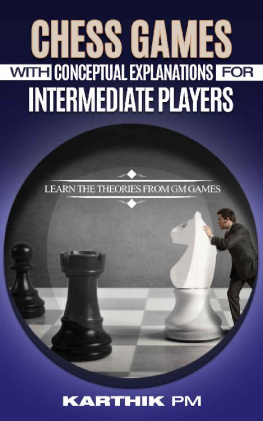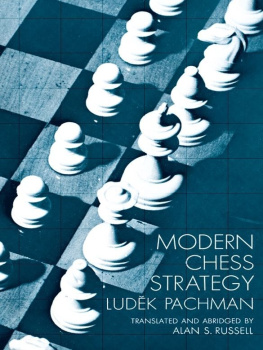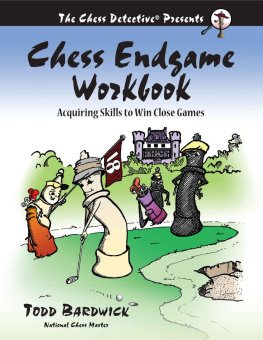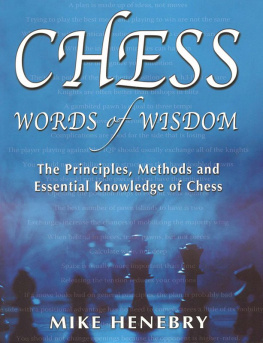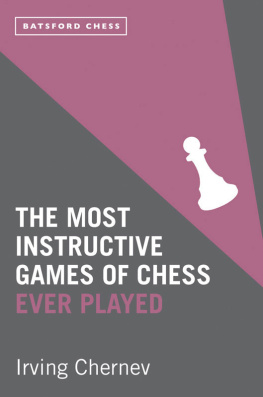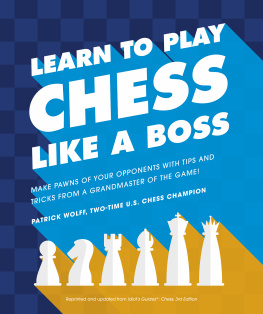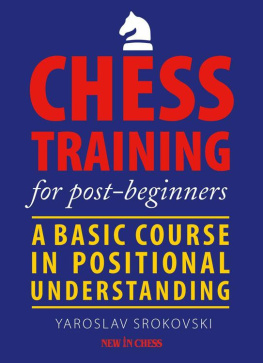
Chess Analytics
Training with a Grandmaster
by
Efstratios Grivas
Foreword by Robert Zysk

2012
Russell Enterprises, Inc.
Milford, CT USA
Chess Analytics
Training with a Grandmaster
by Efstratios Grivas
Copyright 2012 Efstratios Grivas
All Rights Reserved. No part of this book may be used, reproduced, stored in a retrieval system or transmitted in any manner or form whatsoever or by any means, electronic, electrostatic, magnetic tape, photocopying, recording or otherwise, without the express written permission from the publisher except in the case of brief quotations embodied in critical articles or reviews.
ISBN: 978-1-936490-41-7
Published by:
Russell Enterprises, Inc.
PO Box 3131
Milford, CT 06460 USA
http://www.russell-enterprises.com
Cover design by Nicolas Sphicas with Janel Lowrance
Printed in the United States of America

Foreword
Why do we read a chess book? There are mainly two reasons: we seek entertainment and we want to improve our play.
While certainly entertaining, this book is clearly dedicated to the ambitious player who has reached a certain level and wants to improve even further.
You want to advance from a medium player to a stronger player, from a strong player to a master? Well, you have made an excellent choice.
Based on the analysis of high level games you will be presented with and have explained (this is something that your chess engine wont do for you!) important middlegame and endgame patterns, winning strategic plans, and typical mistakes. Several personal remarks about the authors and his students tournament practice add another dimension, as you get an idea about the emotions involved in a tournament game.
There is a broad range of the subjects which are covered. You will find well-known subjects like back rank mate combinations, chapters about isolated pawns, strong squares, etc., as well as less commonly presented patterns, such as the chapters False Guards or The Kings Golden Cage. The guiding principle of these themes is their practical value. This is particularly true in the endgame section where the author deals with structures which occur relatively often but are rarely presented in chess literature.
The structure of each chapter is clear and methodical. The concept is explained in a few lines and illustrated in carefully selected, annotated master games. A conclusion with practical hints rounds off each section.
Working through the book will increase your general understanding of chess. Thus your progress will be permanent and sustainable. Unlike opening theory which is subject to rather dramatic changes in a relatively short period, the principal rules of chess strategy have remained the same over time.
Personally, I particularly enjoyed the chapters about Dancing Knights and Decisive Games and the entire section about endings. Yes, sometimes you will need to go through a lot of analysis in this section but there is a good chance that this work will bring you the desired extra half-point in your tournament games.
Some remarks about your author. I have known and have been good friends with Efstratios (Stratos) Grivas now for 30 years. He is a grandmaster and by definition an excellent player. But more importantly for you he is one of the worlds leading chess trainers, one of those who can help you to become a grandmaster. (Well, I do admit that achieving that goal takes more than reading one book. It takes talent, time and tournament practice and... some luck!)
Having been brought up as a chessplayer by leading trainers of the Eastern European Chess School, he has devoted almost two decades of his life to chess training. Consequently he is now an executive member of the FIDE trainers commission. This position compels him to travel a lot, giving classes to future FIDE Trainers.
Bottom line: you are in the safe hands of a real expert who is dedicated to chess training. Thats the good news.
Now the bad news: buying Stratos book and even reading it is not enough. You have to work with it, you have to play through the games, follow the analyses and understand the concepts presented to reap the real benefits. This means that you will have to spend time and effort. And, of course, you will need to play some tournaments to put into practice what you learned.
On the other hand, if you make that effort, you are almost sure to improve your success at chess substantially. And thats what you really want, right?
I sincerely wish to all of you that you will experience this effect!
International Master Robert Zysk
Germany
March 2012
The Middlegame
Pinning
Concept
The concept of pinning is a very simple one, as its definition is rather basic: the piece that is pinned cannot move either because it allows the opponent to win material or because it is simply forbidden to do so!
Pinning a piece is an everyday action during a chess game, but the question remains: how can we really benefit from a pin? Well, there are many ways but the most often met are:
(1) Instantly winning material;
(2) Long-term win of material;
(3) Disrupting the opponents camp; and
(4) Help an attack or a defense.
Here we are going to see some examples that mostly deal with the second concept. We shall start with the long-term pinned rook concept and the way to benefit from it. The first game is a clear case of our theme:
(1) Sulava Kryvoruchko
Calvi 2007
Queens Gambit Declined [D41]
1.Nf3 c5 2.c4 Nf6 3.Nc3 Nc6 4.g3 d5 5.d4 e6 6.cd5 Nd5 7.Bg2 Be7 8.0-0 0-0 9.Nd5 ed5 10.dc5 Bc5 11.Bg5 f6 12.Bd2 Be6 13.e3 d4 14.ed4 Nd4 15.Be3 Nf3+ 16.Qf3 Be3 17.Qe3 Qd7 18.Rfd1 Qf7 19.Bb7 Rab8 20.Bf3 Rb2 21.Rd6 Rb6 (D)

Black seemed to have everything under control, but he had missed a detail:
22.Qe6! Qe6 23.Re6 Re6 24.Bd5 Rfe8
Or 24...Kf7 25.Re1 Rfe8.
25.Re1 Kf7 (D)
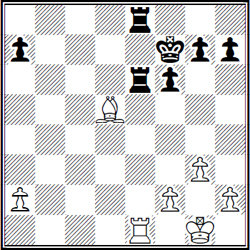
Of course Black had counted on that position, based on his ...f5 and ...Kf6 plan.
26.f4! f5
Or 26...g6 27.g4 f5 28.g5+.
27.g4! g6
27...Kf6 28.g5+
28.g5
And now Black can never unpin his rook without losing a great deal of material.
28...h5 29.Re5! (D)
Preparing the white kings journey on the queenside.
29...R8e7 30.Kf2 Re8 31.a4 R8e7 32.Ke3 Re8 33.Kd4 R8e7 34.Kc5 Rc7+ 35.Kb5 Rce7 36.Be6+ Re6 37.Re6 Ke6 38.Ka6 Kd6 39.Ka7 Kc7 40.h4 Kc6 41.Kb8 1-0
Black resigned as he will get the white a-pawn but in the meantime his opponents king will penetrate on the kingside collecting the black pawns. Good chess games are divided in two main parts: the excellent and those which could be excellent if the most beautiful variations were actually played!
(2) Dautov Krasenkow
Essen 2002
Dutch Defense [A84]
1.d4 d5 2.c4 e6 3.Nc3 c6 4.e3 f5 5.g4 fg4 6.Qg4 Nf6 7.Qg2 c5 8.Nf3 Nc6 9.Bd2 Bd7 10.0-0-0 Qe7 11.Ne5 cd4 12.ed4 0-0-0 13.Bf4 Qe8 14.cd5 ed5 15.Nc6 Bc6 16.Qg3 b5 17.Be5 Kb7 18.Qd3 Ne4 19.Ne4 de4 20.Qb3 a6
Next page
